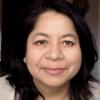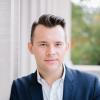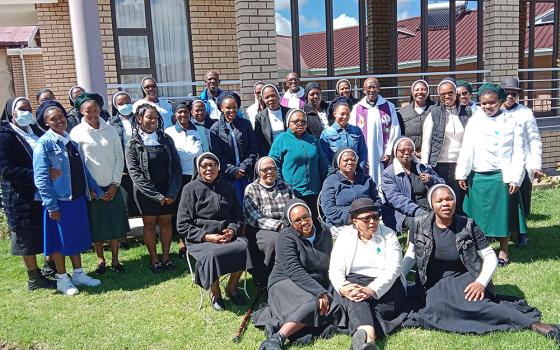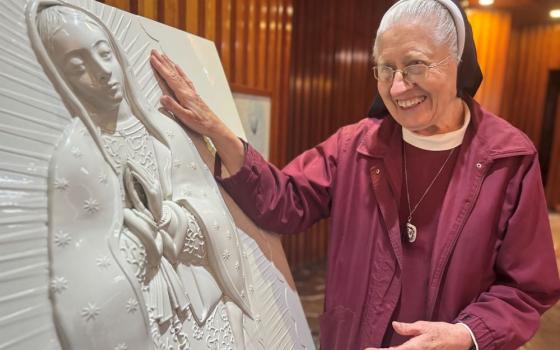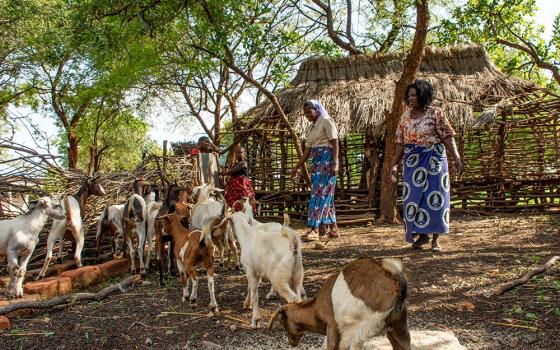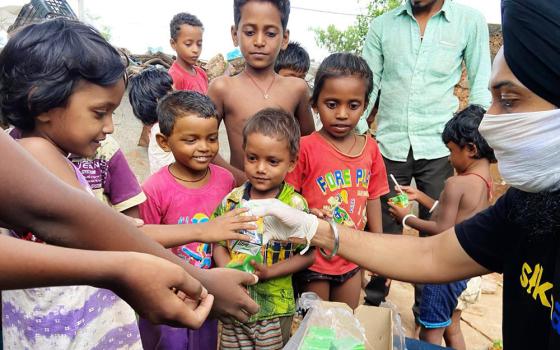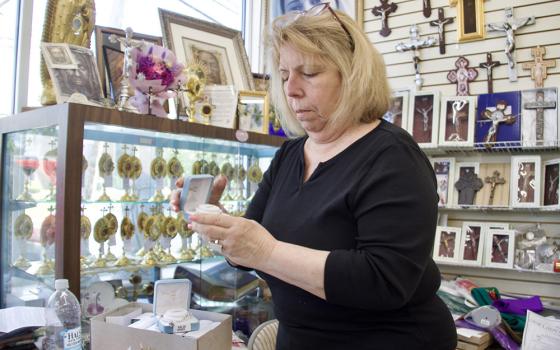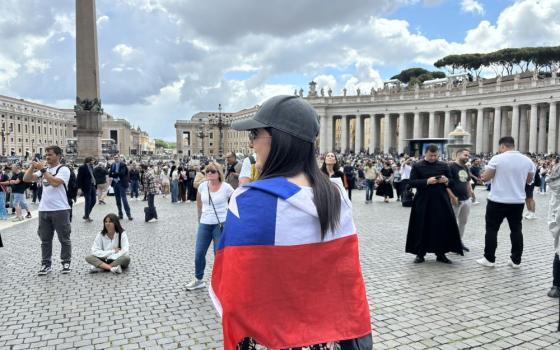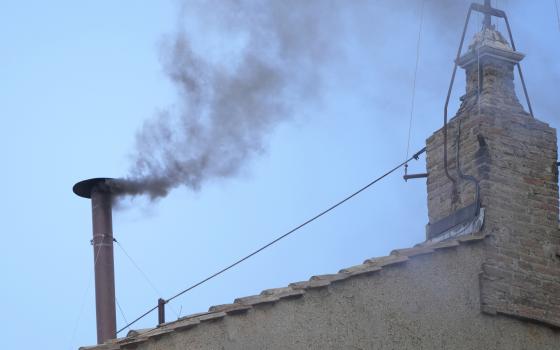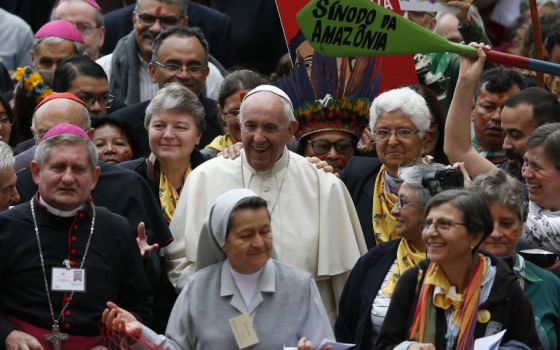Black smoke billowed from the Sistine Chapel chimney at 9 p.m. local time on May 7, signaling to the world that no new pope had been elected on the first day of voting during the conclave to elect a successor to Pope Francis.
At 4:30 p.m., 133 cardinals processed from the Vatican's Pauline Chapel into the Sistine Chapel. After the papal master of ceremonies, Archbishop Diego Ravelli, declared extra omnes ("everyone out"), the doors of the chapel were sealed and conclave voting began.
No new pope was expected to be elected on the first ballot during a contest with a range of front-runners and few clues as to who might emerge as the next pontiff. The first round of voting is typically a moment where cardinals are given their first opportunity to see which candidates are getting the most interest from other cardinal electors.
"This is the first vote of a completely open race," said Natalia Imperatori-Lee, a theologian at Manhattan College. The real voting begins on Thursday, she said.
"The purpose of this first ballot is a 'lay of the land,' or a 'vibe check,' as the kids would say," said Imperatori-Lee, a specialist in Catholic ecclesiology. "It reveals who the major players are, whether there are any outsiders, whether and what sort of statements electors want to make. They will get to mull the landscape over tonight, at dinner and then afterwards, alone in their rooms."
Outside in the packed St. Peter's Square, crowds cheered when black smoke appeared.
Gary and Laureen Toney of Annapolis, Maryland waited more than two hours for smoke. They were not disappointed — they smiled when the smoke appeared — because they did not expect a pope on the first vote.
"We’ll never know the inside story about why it took so long," said Gary Toney, a retiree who joined the church on Easter at St. Augustine Church in Washington, D.C.
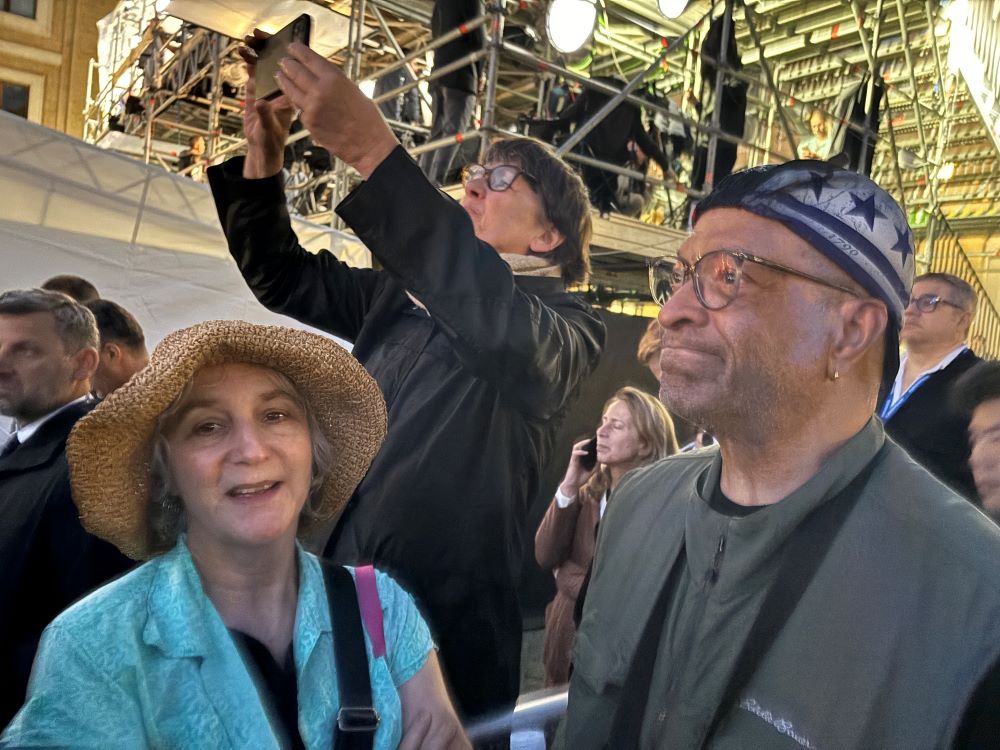
The Toneys found a spot next to the scaffolding tower where some TV media were located. (NCR photo/James V. Grimaldi)
Francis died April 21 at age 88. He was elected March 13, 2013, after five votes in a two-day conclave. His predecessor, Pope Benedict XVI, was elected April 19, 2005, after four votes in two days. Benedict resigned as pope Feb. 11, 2013, at age 85; he died Dec. 31, 2022, at age 95.
With 133 eligible cardinals participating in this conclave, a candidate must receive a two-thirds majority vote — 89 — to be elected.
Initially the normal bustle of St. Peter’s didn’t come to a full halt May 7 but it quieted during the Litany of the Saints and as the cardinal electors took the solemn oath at 5 p.m.
Sr. Margarita Villa, of the Sisters of the Family of Sacred Jesus from Mexico, watched the screen intently at St. Peter’s Square. The sisters were on church business in Rome but stopped to watch the oath, she said.
Few expected white smoke but it was a chance to take part in the history of the church.
For some, it was the chance to show support for their favorite. Some clapped when they heard the name of Italian Cardinal Matteo Zuppi. They clapped once again after the doors of the chapel closed.
“I got goosebumps,” said Cristina Tapasco of Colombia, who was watching with her mom in Candelaria Trejos and other family members in the square.
They had scheduled a vacation to Rome and it happened to fall during the conclave, Tapasco said.
They don’t have a favorite candidate for pope.
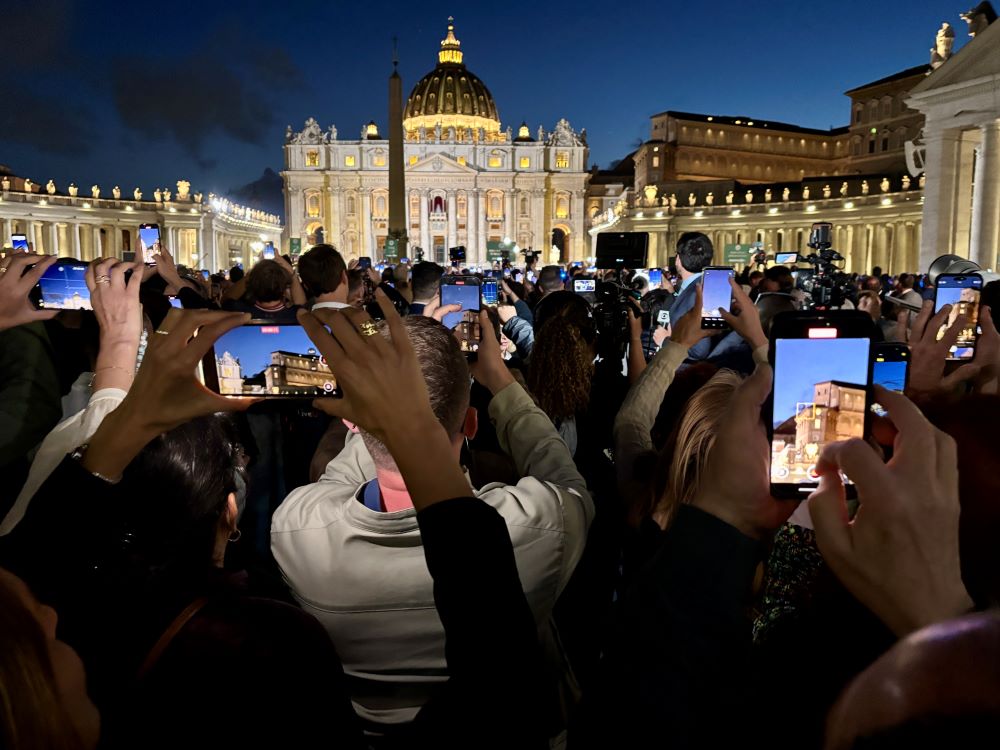
The crowd at St. Peter's Square takes photos of the black smoke from the Sistine Chapel on May 7. (NCR photo/James V. Grimaldi)
A few brought flags from their home country.
Gabrielle Estrada of San Antonio, Texas, carried one from the United States. She was on vacation in Europe and had seen Pope Francis on Easter Sunday, she said, but extended her vacation to watch the conclave.
"For me, I'm just excited to see who they're going to pick," she said. "I trust the Holy Spirit."
Once the cardinals enter the Sistine Chapel for voting, no formal discussions occur. Each cardinal present casts their ballot one person at a time, writing on it the name of their preferred candidate and folding it
They process to the altar, one by one, and declare: "I call as my witness Christ the Lord, who will judge me, that my vote is given to the one whom, according to God, I believe should be elected." They do so standing face to face with Michelangelo's imposing fresco painting "The Last Judgment."
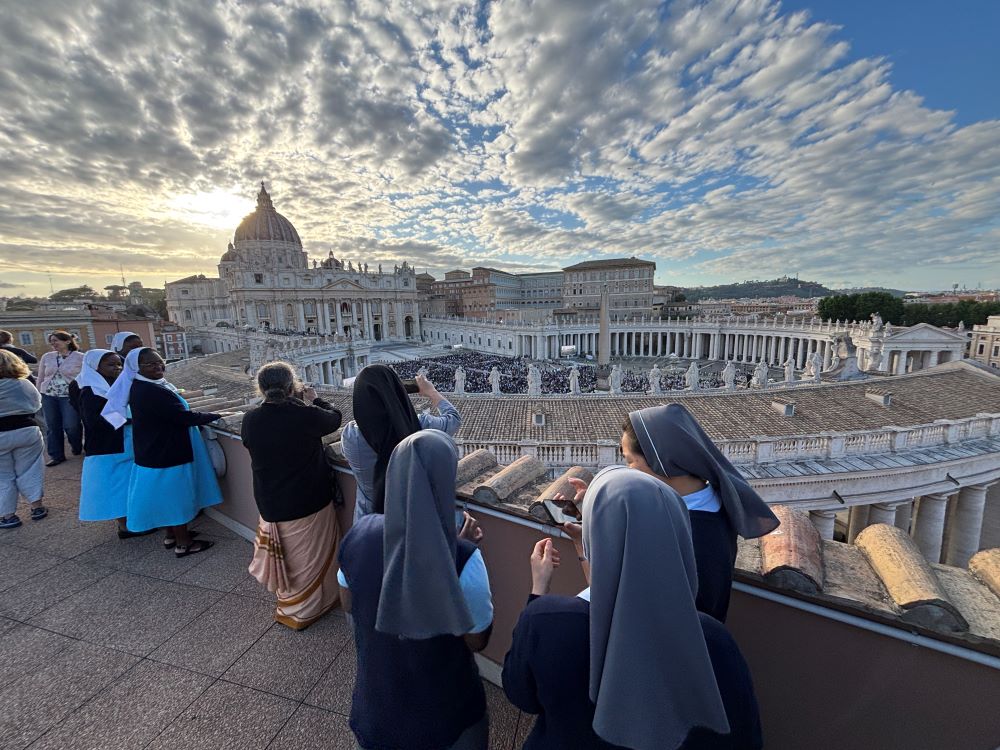
Sisters on the roof of Convent Istituto Maria overlooking St. Peter's Square wait for smoke from the chimney of the Sistine Chapel May 7. Black smoke indicates the cardinals have not chosen a new pope; white smoke means they have selected a new pontiff. (NCR photo/James V. Grimaldi)
Voting will resume at 9 a.m. May 8. Cardinal electors cast two ballots each day before lunch and two ballots after lunch. Ballots are burned in a wooden stove after they are counted; colored ink cartridges are used to create black smoke to signal that no election has occurred and white smoke if a new pope has been elected.
Over nearly two weeks of pre-conclave meetings, cardinals held vigorous debates on the future of the Catholic Church at a moment where the 1.4 billion member institution is at a crossroads. The cardinals, whose chief job it is to elect a new pope, must now decide whether to continue the late pope's reform agenda or to initiate a course correction.
The cardinals will remain sequestered inside the Vatican with no communication with the outside world until a new pope is elected.
James V. Grimaldi contributed to this report. It was copy edited by Renée K. Gadoua.
NCR environment correspondent Brian Roewe contributed to this report. The National Catholic Reporter's Rome Bureau is made possible in part by the generosity of Joan and Bob McGrath.
NCR is an independent nonprofit and relies on support from readers like you, especially at this crucial moment in church history. Please donate here to the Spring Fund Drive.
Advertisement
